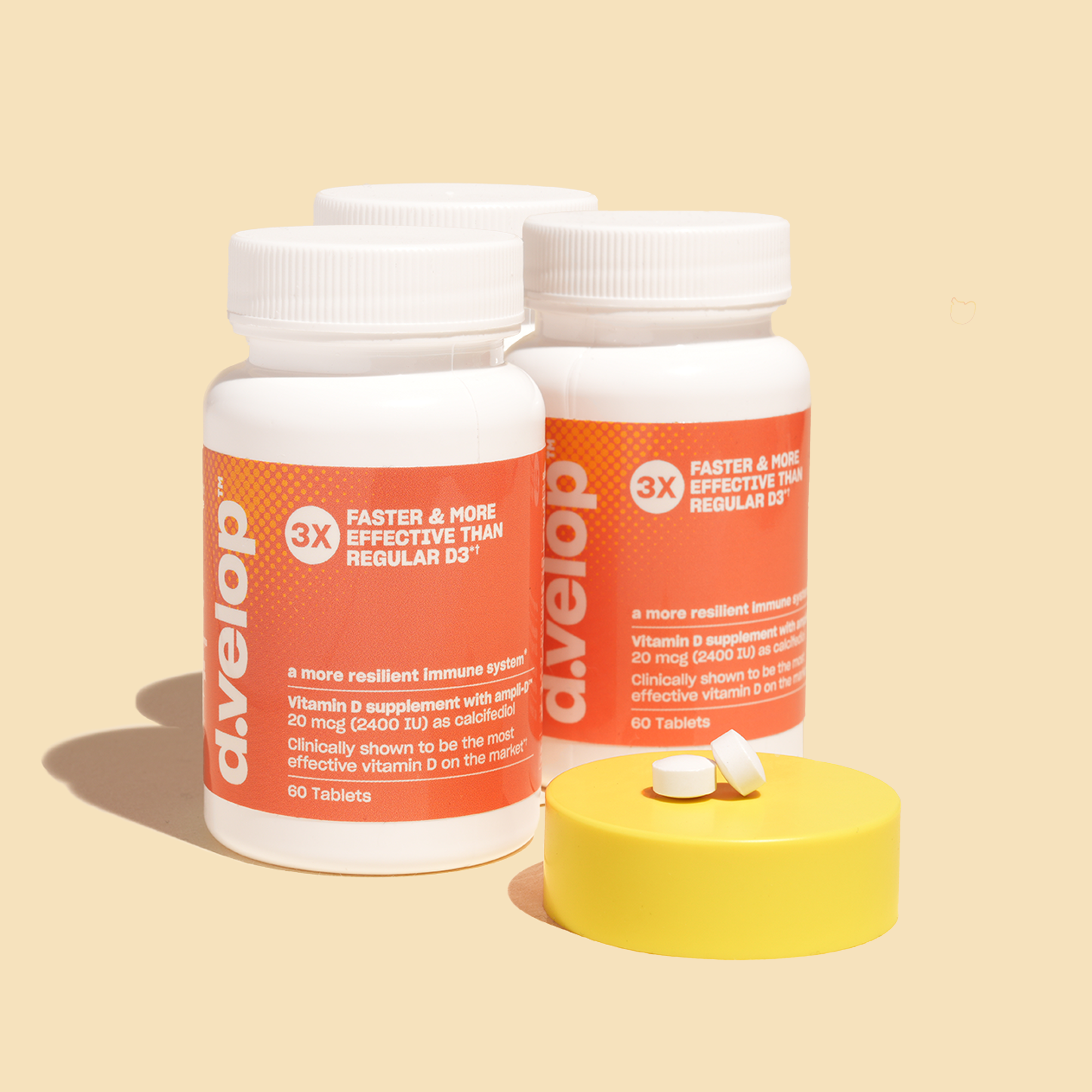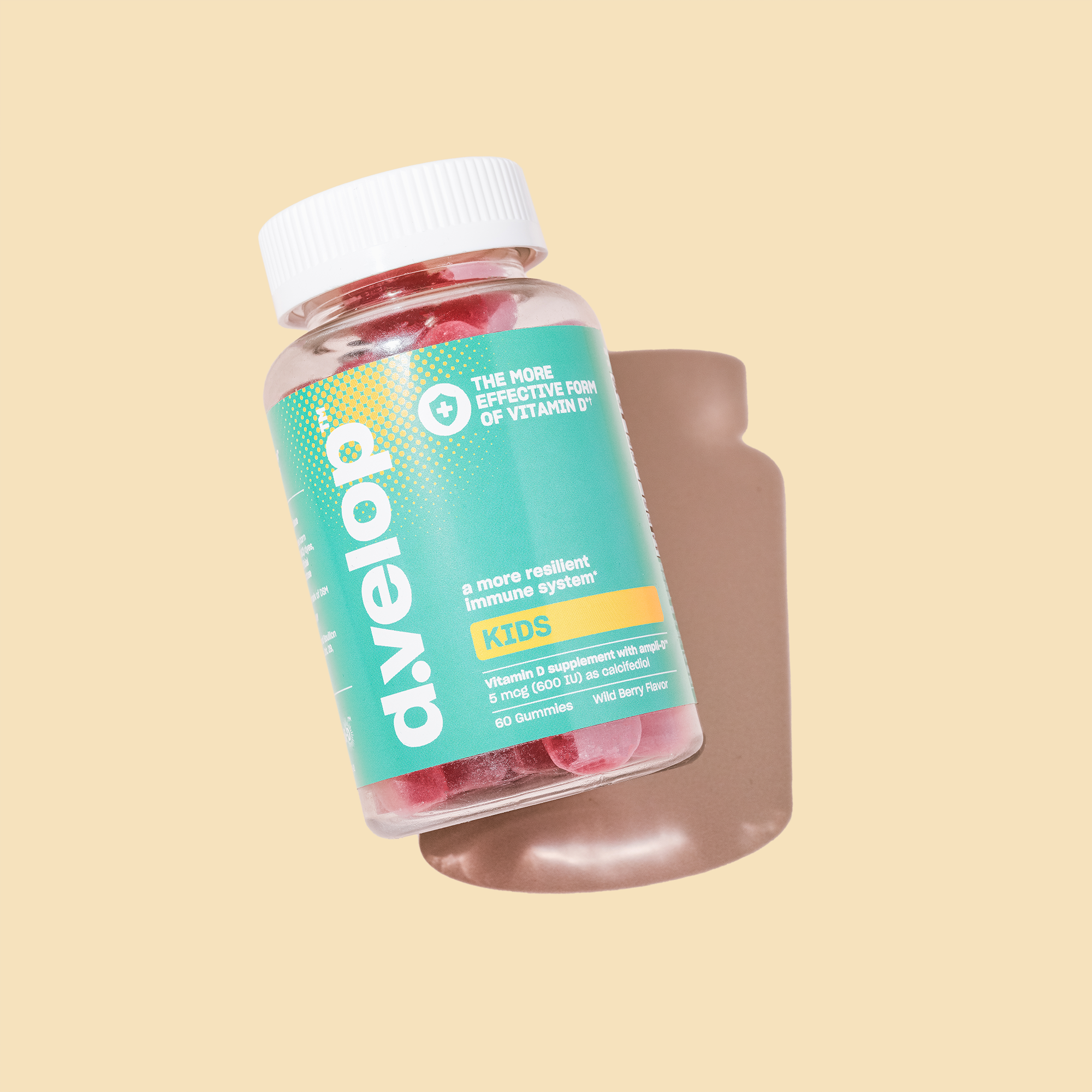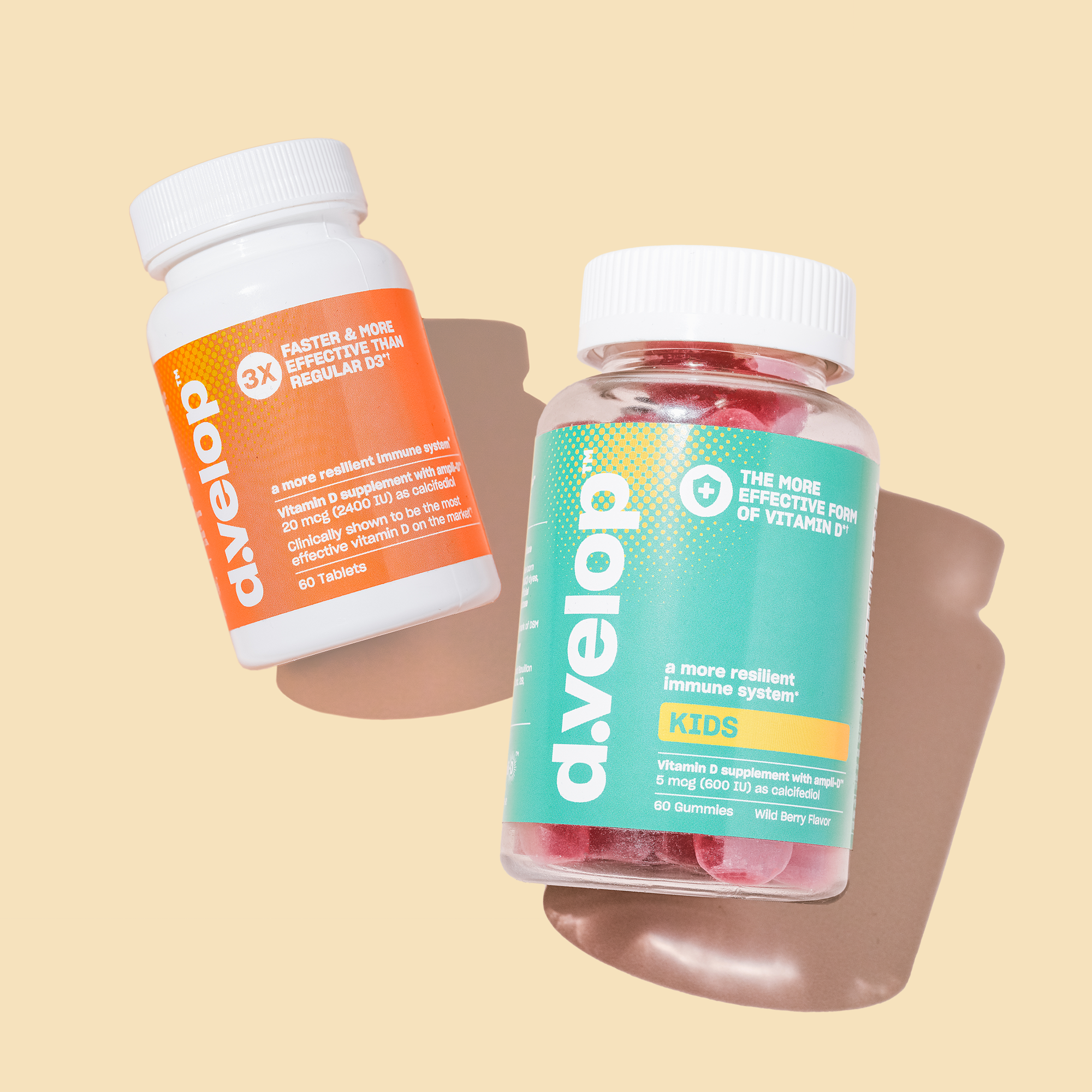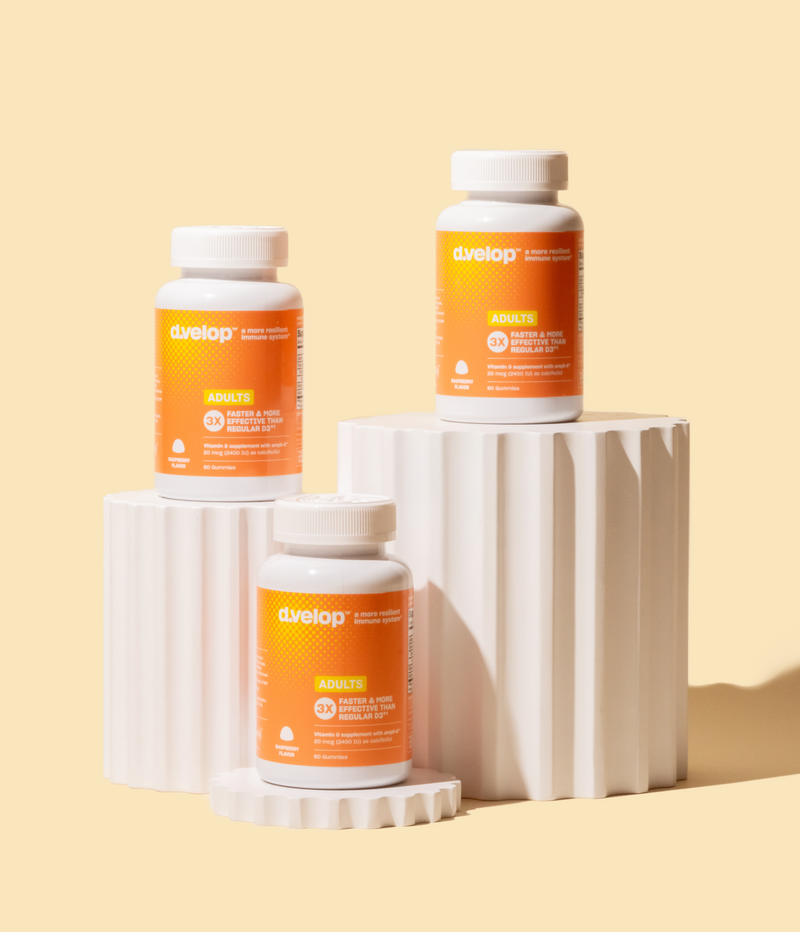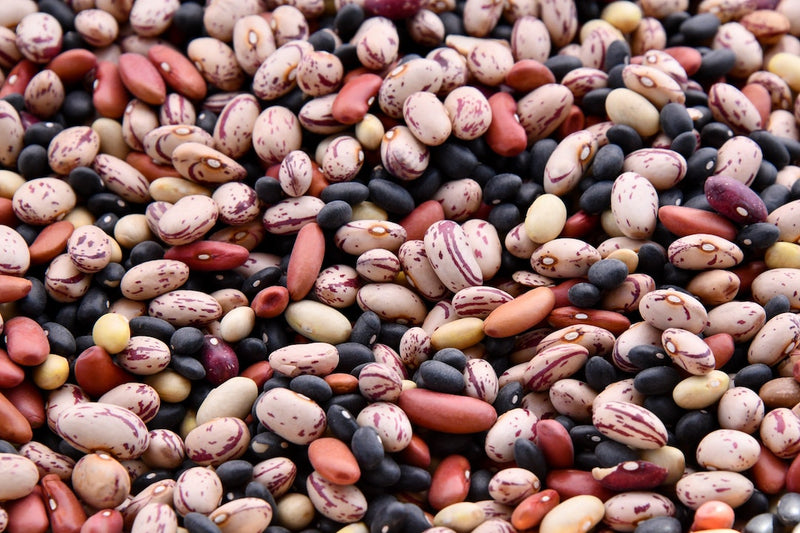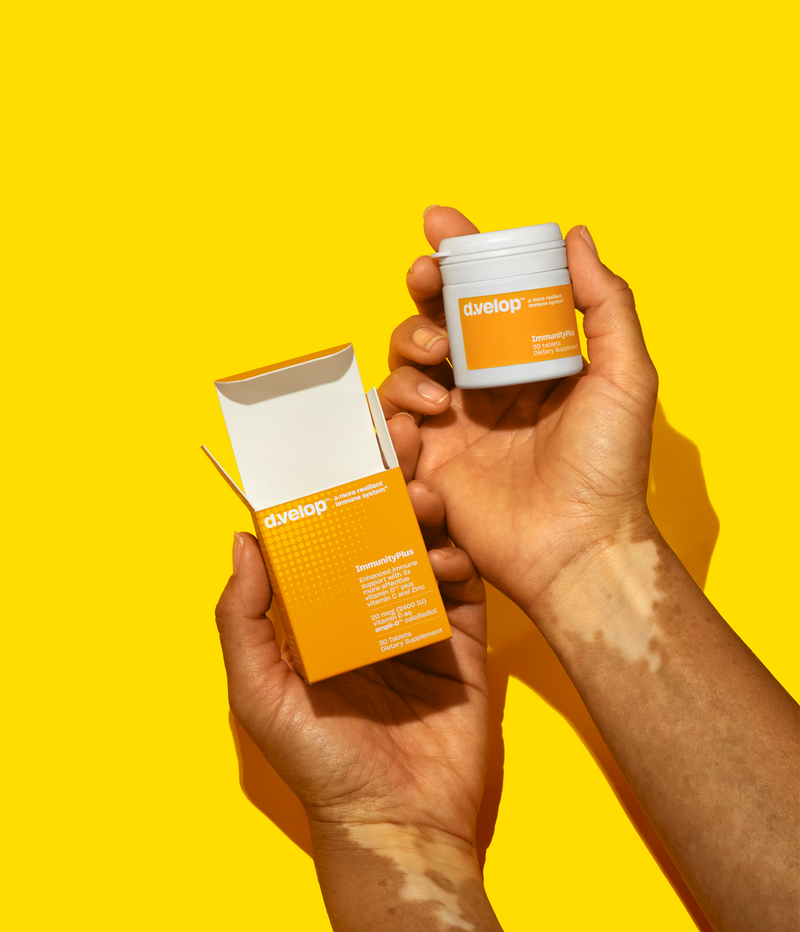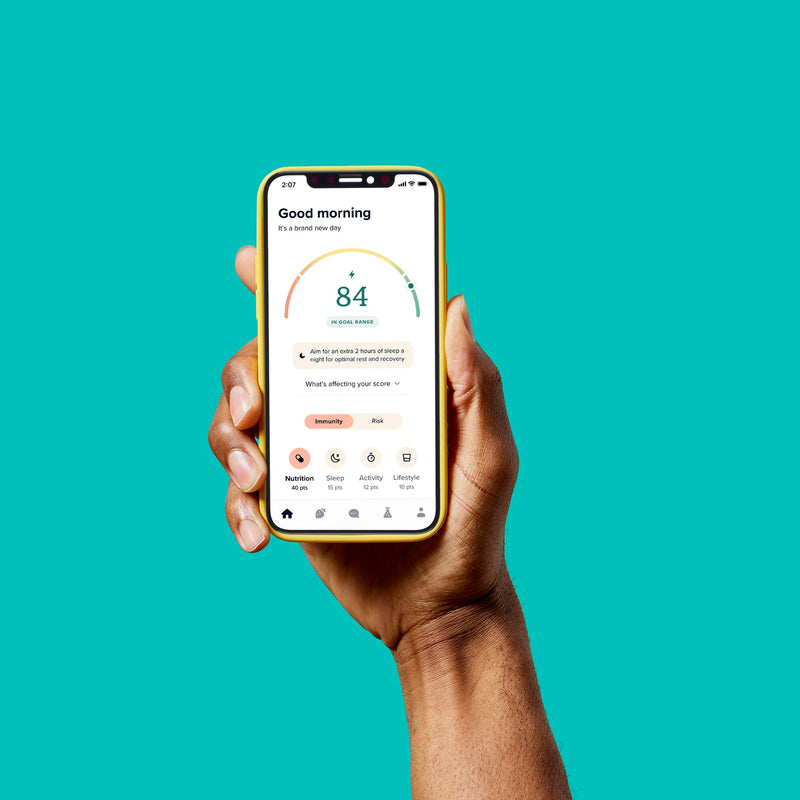Did you know only about 10% of our vitamin D comes from the diet, and the remaining is obtained from the sun? So, isn’t it natural to get more Vitamin D in the spring and summer when the sun is shining? The short answer is, it depends! Here are some considerations for determining if you need a Vitamin D supplement in the spring and summer months.
Sun Exposure and Vitamin D
How exactly do you improve your vitamin D levels through sun exposure? Your skin produces vitamin D when exposed to the sun. When the sun hits your skin, the UV rays interact with cholesterol in your skin cells and break it down into cholecalciferol (a form of Vitamin D). Then, your kidneys and liver turn it into an active form of vitamin D that your body can use.
Factors to Consider
Where you live plays a key role in your sun exposure in terms of both amount and quality. Those who live closer to the equator are exposed to more sunlight and vice versa. For example, those living in the southern regions of North America (Southern United States, Mexico, Caribbean countries) are exposed to more sunlight and stronger sunlight than those living further north.
Additionally, the color of your skin tone is a factor in how much vitamin D your body can make. Melanin is a natural skin pigment that gives color to your skin, hair, and eyes. It also helps to absorb harmful ultraviolet (UV) rays from the sun and protects against damage from sun exposure. Individuals with more melanin, or pigment in their skin, tend to have greater protection from the sun. However, more melanin also makes it harder to convert those sunny rays into vitamin D.
Finally, the time you are outside makes a difference. Sunlight is typically strongest from the late morning to afternoon (roughly from 11 am-3 pm). If you are inside during these hours, or if you cover exposed skin or wear sunscreen, you are likely not receiving adequate vitamin D from the sunlight alone.
Risks of Sun Exposure
As good as the warm sun feels on our skin after a long winter, it can be extremely harmful if our skin goes unprotected with repeated exposure.
UV rays cause damage to our skin cells in the form of sunburns and physical signs of aging - such as sun spots, and also increases the risk of skin cancer. Some researchers recommend exposing unprotected skin to the sun outdoors approximately three times per week during the midday hours for the first 10-30 minutes before applying sunscreen. While, other research suggests that the UV damage to the skin from the sun outweighs the benefit of receiving vitamin D from sunlight.
Either way, it’s important to protect your skin from repeated and prolonged sun exposure. It’s best practice to use a high factor SPF with UVA/UVB protection when you plan on being out in the sunlight for prolonged periods no matter what time of year.
Understanding Your Levels
The amount of Vitamin D produced from sun exposure varies person to person, so it is hard to come up with a definitive amount of time one should spend out in the sunlight to receive enough vitamin D. Getting enough vitamin D through the diet can be challenging as only a few foods are naturally high in vitamin D, such as fatty fish like salmon, tuna, or mackerel, cheese, and egg yolks. However, many foods in the U.S. are vitamin D fortified (meaning they have vitamin D specifically added in), including breakfast cereals, some orange juices, and yogurt.
The only way to truly understand what your vitamin D needs are is by taking a blood test. Keeping track of your vitamin D levels throughout the year, such as by using the d.velop™Vitamin D Test. Knowing your vitamin D levels will help you decide whether or not you might need to supplement during the warmer months of spring and summertime.
Author
Amy Hoover MA, RDN, CDN
References
- McKay GJ, Young IS, McGinty A, et al. Associations between Serum Vitamin D and Genetic Variants in Vitamin D Pathways and Age-Related Macular Degeneration in the European Eye Study. Ophthalmology. 2017;124(1):90-96. doi:10.1016/j.ophtha.2016.09.007
- Rhodes LE, Webb AR, Fraser HI, et al. Recommended summer sunlight exposure levels can produce sufficient (> or =20 ng ml(-1)) but not the proposed optimal (> or =32 ng ml(-1)) 25(OH)D levels at UK latitudes. The Journal of Investigative Dermatology. 2010;130(5):1411-1418. doi:10.1038/jid.2009.417
- Moan J, Dahlback A, Porojnicu AC. At what time should one go out in the sun? Advances in Experimental Medicine and Biology. 2008;624:86-88. doi:10.1007/978-0-387-77574-6_7
- Cicarma E, Porojnicu AC, Lagunova Z, Dahlback A, Juzeniene A, Moan J. Sun and sun beds: inducers of vitamin D and skin cancer. Anticancer Research. 2009;29(9):3495-3500. Accessed March 24, 2022. https://pubmed.ncbi.nlm.nih.gov/19667143/
- Hartley M, Hoare S, Lithander FE, et al. Comparing the effects of sun exposure and vitamin D supplementation on vitamin D insufficiency, and immune and cardio-metabolic function: the Sun Exposure and Vitamin D Supplementation (SEDS) Study. BMC Public Health. 2015;15(1). doi:10.1186/s12889-015-1461-7
- Research C for DE and. Sunscreen: How to Help Protect Your Skin from the Sun. FDA. Published online November 8, 2021. Accessed May 3, 2022. https://www.fda.gov/drugs/understanding-over-counter-medicines/sunscreen-how-help-protect-your-skin-sun
